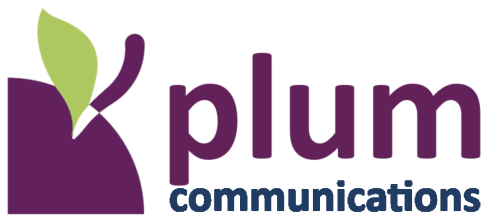What is the internet?
It’s a question we rarely ask ourselves. The internet has become so ingrained within our everyday lives that we’ve simply accepted it as a normal. Even the United Nations in 2016 deemed internet access a human right. Many rely on it for communication, entertainment, but in the world of business, it is absolutely critical in the running of your operations – we at Plum Communications understand this fact completely.
So, getting back to the original question: What is internet? It’s always compared to a galaxy: an interconnected network of infrastructure all working together to ferry information and data from one place to the next. How it carries out its mission however has changed over time.
Dial-Up
The earliest commercial use of the internet was known as dial-up, which first saw commercial use in the UK in 1992. It relied on conventional telephone lines to transport data, which were made from iron or steel. By 1998, the optimistic speed of a dial-up connection was a measly 58kbps. That meant it could take minutes to download a small file by today’s standards, such as an image or a piece of music, and something with a file size in the hundreds of megabytes – such as a film or whole album – could take days to complete. Furthermore, as your phone and internet connection shared the same line, you had to choose one over the other. You couldn’t use the internet if your phone was receiving calls. When you factored in the hefty cost of a modem for the era, which ranged upwards of £300 just to create one connection, it seemed like a niche gimmick at the time for most people.
Still, in business, the principle of utilizing phone lines to transfer data did find a use in fax machines. Antiquated by today’s standards, the easiest way to describe a fax machine was a combination phone-printer. You discussed information with a client or colleague from who was far away and you could important files to them or vice versa. Even in the early days, the benefits of data transfer and telecoms were starting to emerge. Communication was, and still is, one of the most important aspects of business and anything to improve or enhance your existing capabilities was too good of an opportunity to pass up.
Fortunately, the world was stuck for too long in the constraints of dial-up. Less than a decade later, a colossal stride forward was made that changed the business-internet landscape forever.
Broadband
‘Broadband’ as we know it is a catchall term for a dedicated internet line. It is a line capable of transmitting wide bandwidth data over a highspeed internet connection. Why they didn’t call it ‘Wideband’ instead, we’ll never know, however the huge leap it provided more than makes up for the misgivings of its name. The advancement sounds simple in theory: Separation of the phone line from the internet. Early sellers of broadband advertised it as an ‘always-on’ internet service. The first seller of this service was NTL – who might now know as Virgin Media – followed by BT, Telewest – who merged with NTL to form Virgin Media – and Kingston Communications – now KCOM. This is a just a convoluted way to say that communication companies had struck gold, and many were rushing in to try and get their share of it. Even today, the companies with the largest market share in broadband were those that embraced the technology first.
Progressing from dial-up was a significant leap. Instead of 56kbs, you were now getting speeds upwards of 512kbs. Whilst that might not seem like much today, it was a tenfold increase, and such a leap in speed wouldn’t be matched again until another decade later with the rollout of fibre to the premises. Whilst it took until 2008 for more than 50% of the country to have broadband in their homes, the steadily increasing market made it viable for businesses to use the internet to bolster their sales, marketing, and communications. Internet domains, ads, online transactions, money saved on communications by utilizing VoIP and SIP. The internet opened many avenues for a business to take that allowed them to maximise efficiency and save on overall costs.
Variety
The market thrives on variety. If there was only one option, it lowers the range of what you can sell and potentially proffer from. The same goes for broadband. It has had many iterations and variations over the course of its history. Let us look at a few.
ADSL2+ – The earliest form of broadband was called ADSL. It was, at its core, an upgrade to the previous dial-up system. It wasn’t reliant on phonelines and provided a user with uninterrupted internet access. Despite its introduction a couple decades ago, it remains relevant due to its widespread availability. It’s not the fastest option available, but if you don’t expect to be a heavy user, then it can fall into the goldilocks zone of being just right for all your internet requirements – especially if your intent is just to use it for calls and not transfers of large amounts of data. For small businesses and brick & mortars, this would be likely be your preference.
FTTC – Fibre to the cabinet is a compromise between ADSL and the more advances in broadband technology. Fibre optic cables are used to transfer data packets to the distribution cabinet before the rest of the rest of the journey is done entirely on copper cables like ADSL. The speed ceiling for FTTC is higher than ADSL but is beaten handily by most of its alternatives. This would be optimal for a small business desiring slightly faster download speeds for customer Wi-Fi or for some internet browsing for workers. It cannot handle massive amounts of calls simultaneously, but it should serve your means if you don’t expect heavy call traffic.
ETHERNET/Leased Line – This form of broadband prioritises consistency above all else. Instead of utilising fibre, leased lines work by merging multiple copper cables to form one super line intended for business use. Unlike FTTC and ADSL, which have uploads speeds at only a fraction of download speeds, ethernet lines have symmetrical upload and download speeds meaning you can get the best of both without compromise. This is because FTTC and ASDL still use a phoneline as the delivery method, whilst ethernet separates downloads, uploads, and calls on separate cables within the same line. Many companies advertise this as ‘business broadband’ for good reason. This line can also be versatile, and instead of copper you can spend extra to merge multiple fibre cables to get unparalleled internet speeds. This broadband requires the installation of a private line to facilitate, which may or may not be a drawback for some. It’s good for businesses expecting moderate to heavy call traffic whilst also requiring a lot of downloads.
FTTP – Fibre to the premises is the fastest commercial broadband that’s available. It makes use of fibre optic cables to transfer data packets to the cabinet and to the premises completely uninterrupted at light speed. It has unmatched upload and download speeds that can facilitate most if not all your business needs. Unfortunately, FTTP isn’t as widely available as its alternatives, and is split amongst several providers, most notable of which being Virgin Media. However if you’re eligible for installation or are soon to be, and would like to increase your capacity to receive and make calls, download and upload, then fibre is indisputably the best broadband you can get for your business.
Mobile internet – Mobile internet has just as long and varied a history as an entirety of home broadband in of itself, with 2G (predecessor to 3G) first making an appearance in 1991. 3G made an appearance a decade later midway through 2001. Back then it had a speed of 144 kbit/s, which was miniscule compared to ADSL’s 10mbp/s. It wasn’t until the advent of 4G, which saw speeds rise to 15mbp/s, did mobile broadband finally see viable business use. Such speeds are comparable to ADSL, facilitating light call traffic and internet use. Mobile internet is especially useful for businesses with no fixed premises, such as construction sites. With 5G, which sees that speed go ten times faster to 150mbp/s, it may be possible to work from anywhere – so long as you’re in range of a 5G tower – or utilise it as a backup internet should your main source see any temporary faults.
Which is the best for you?
Only you know what’s best for your business. However, Plum Communications can help point you in the right direction. If you get into contact with us, outline your expected call flow, broadband usage, and work requirements, we can help point you in the right direction.

